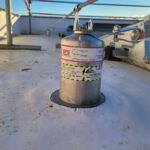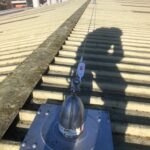Horizontal Lifeline systems





360 Height projects supply, install and inspect horizontal lifeline systems, our installers have extensive experience in installing the safety lines in order to maximise end user safety, efficiency and ease of use.
Falls from height are one of the leading causes of fatalities and injuries in construction, utilities and maintenance industries. Usually, workers don’t use lifelines because of a lack of available anchor points or movement limitations, but this is a severe hazard and precautions are absolutely necessary.
Horizontal lifeline systems, knowns as HLL, provide increased safety, mobility and reliability during the job. HLL are fall restrain and fall arrest systems used in various applications, such as loading docks and bays, rail runways, rooftops, bridges, etc.
Work restraint systems are the safest method of Horizontal Lifeline system design. Keeping a user in restraint removes the possibility of fall occurring. The users path, and what they have access to can be dictated/controlled.
Keeping a user in restraint is dictated by the relationship of two key distances:
• Lanyard length (A)
• Position of the system and distance away from fall hazard (B),
If the achievable distance between position of line and fall hazard varies on the system route, the lesser distance and therefore
lanyard length should be preferred before any variable lanyard lengths/multiple lanyards are proposed.
The general spacing from system to roof edge/fall hazard is 2.3m which is based on a typical lanyard length of 2m.
Fall Hazards can be roof edges, roof lights or other fragile roof areas such as windows or glass.
Main advantages of work restraint systems:
• No possibility of a fall
• No need for any rescue plan
• Adjacent buildings/lower level roofs and fall clearances
do not need to be factored
• Minimal system user training required
